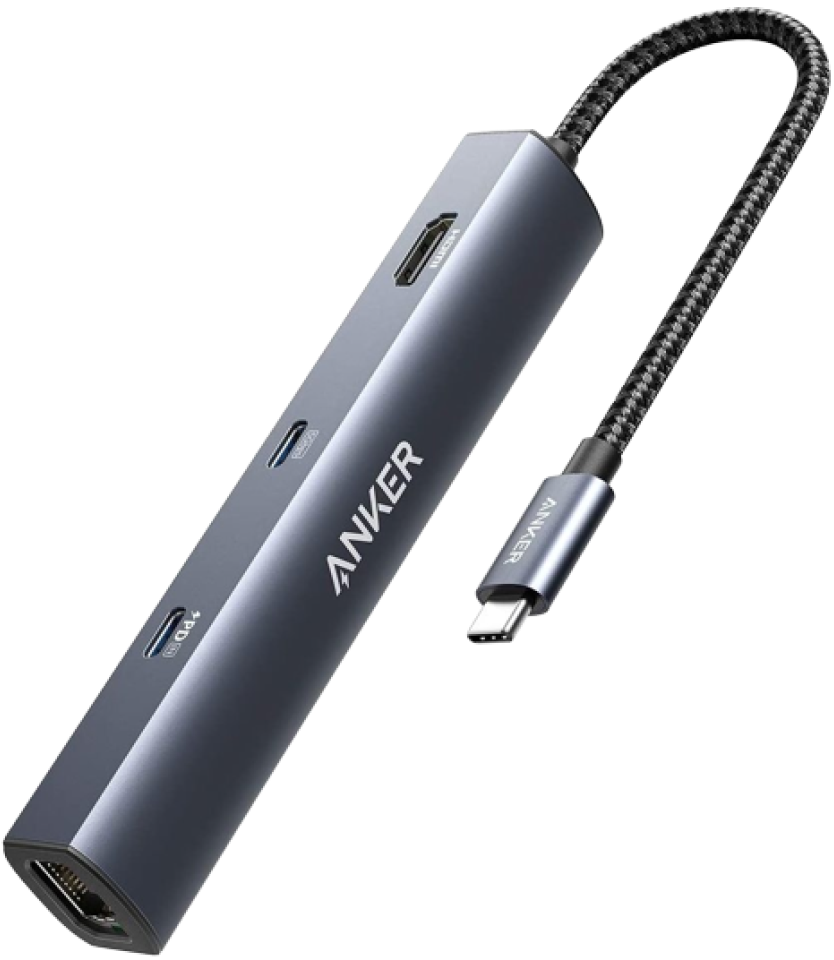Anker has established itself as a dominant player in the charging and connectivity industry, setting the bar for high-quality products that deliver exceptional performance. With our innovative USB hubs, you get the perfect blend of functionality and style, all while enjoying unparalleled stability and connectivity.

Filter

Anker 341 USB-C Hub (7-in-1)
$34.99

Anker 332 USB-C Hub (5-in-1, 4K HDMI)
$29.99

Anker 533 USB-C Hub (5-in-1, Slim)
$35.99

Anker 543 USB-C Hub (6-in-1, Slim)
$39.99

Anker 551 USB-C Hub (8-in-1, Tablet Stand)
$99.99

Anker 553 USB-C Hub (8-in-1)
$45.99

Anker 555 USB-C Hub (8-in-1)
$49.99

Anker 565 USB-C Hub (11-in-1)
$65.99

Anker USB 3.0 Switch (5Gbps, For Desktop and Laptop)
$49.99

Anker USB-C Hub (6-in-1, For Handheld Game Console)
$39.99

Anker 556 USB-C Hub (8-in-1, USB4)
$99.99

Anker 547 USB-C Hub (7-in-2, for MacBook)
$54.99

Anker Hub Mounting Kit
$15.99

Anker 60W 10-Port USB 3.0 Data Hub
$43.99

Anker 332 USB-C Hub (5-in-1)
$24.99

Anker Ultra Slim 4-Port USB 3.0 Data Hub
$14.99

Anker HDMI Switch (4 in 1 Out, 4K HDMI)
$35.99

Anker 575 USB-C Hub (12-in-1, Dual HDMI, DP)
Find the USB Hubs You Need at Anker
Anker offers a wide range of USB hubs to cater to your diverse needs, whether you need a basic hub or a sophisticated one with numerous ports and data transfer features. By considering the factors mentioned above, you can make an informed decision and ensure that you get the best USB hubs for your needs. With our commitment to quality and innovation, you can trust that our USB hubs will deliver exceptional performance and versatility. Browse our selection of USB hubs today and find the perfect solution for your needs.
FAQ about USB Hub
What Are the Functions of a USB Hub?
How Many Devices Can a USB Hub Support?
What Is the Difference Between a USB Splitter and a USB Hub?
-
Appearance: A USB splitter is a simple cable that splits a single USB port into multiple ports, while a USB hub looks more like a plug-in board and is a separate device that expands the number of available USB ports.
-
Construction: A splitter does not have any internal circuitry or power supply. This means that the total power available for connected devices is limited to the power available from the original USB port. On the other hand, some powered USB hubs have their own internal power supply and circuitry and can even connect to power sources like solar panels or solar generators to provide full power to connected devices.
-
Function: While a USB splitter is mainly used for connecting small devices like smartphones or mice, a USB hub can do so much more! In addition to charging devices like portable power stations, a USB hub can also transfer data and even connect to Ethernet.













